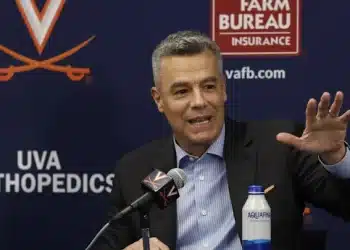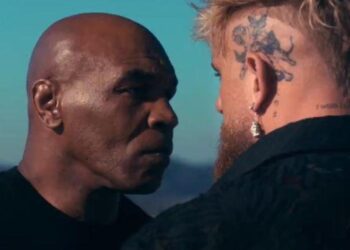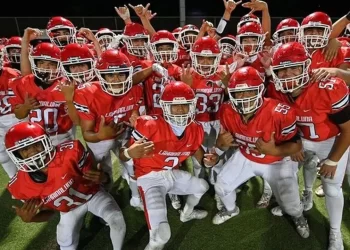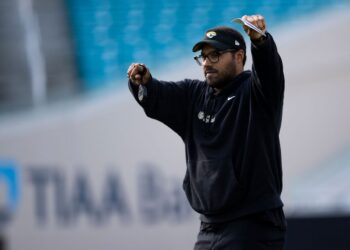By: Zachary Draves
We are living in very dangerous times where, according to the FBI, we have seen a sharp increase in hate crimes being reported since 2017.
There has been a surge in hostile attitudes and behaviors towards immigrants, African Americans, LGBTQ+ people, Jews, and Muslims, among many others. It is happening on the streets, in schools, at restaurants, at places of worship, at gas stations, and in sports.
Sports is a microcosm of American society and is perhaps the most notable cultural space that brings us together and where we learn about everyone’s background and experience by being on the same team. It has led the way for social change throughout our history long before there was any progress at the governmental or institutional level.
If we look at our history, it is evident we have made progress, but we would be naïve to think that our problems of the past are solved. Every time we have made a significant step forward, there is an ensuing backlash that takes us at five steps back.
When Jackie Robinson broke into Major League Baseball, there was a backlash against his presence on the field by spectators, opposing players/managers, and even some teammates such as Dixie Walker who in the team photo from 1947 turned his head to the side, blatantly refusing to acknowledge Jackie’s presence.
1960’s
In 1967, Muhammad Ali refused to serve in the Vietnam War on the grounds of his religious beliefs. He endured the cruelest treatment imaginable that included FBI surveillance under the infamous J. Edgar Hoover. Ali was told by many to “go back to where he came from”. Sound familiar?
At the 1968 Olympics in Mexico City, sprinters Tommie Smith and John Carlos courageously raised their black-gloved fist into the air during the playing of the national anthem during the medal ceremony for the 200 meters.
They were exposed to extraordinary hardship when they returned home that included threats on their lives, lack of job opportunities, their moves monitored by the federal government, and scores of hate mail.
Between 1969-1971, Curt Flood challenged the reserve clause in Major League Baseball after he found out he was being traded from St. Louis to Philadelphia without his consent.
He was told that he should be “grateful” to be playing in the big leagues in the U.S. along with receiving numerous death threats with racist rhetoric.
1970’s
In 1974, Hank Aaron was in pursuit to break Babe Ruth’s record for the most home runs of all time at 714. During his quest that culminated in him achieving the record on April 8 of that year, he was bombarded with racist death threats and needed high-level security to get into the ballpark safely.
In 1978, famed sports scholar and activist Dr. Richard Lapchick, who was an active part of Anti-Apartheid movement, was attacked in his college office by men with masks who carved the N-word in his stomach.
Dr. Lapchick led the effort to bar South Africa from participating in sporting events such as the Davis Cup due to its racist practices.
In 1979, an African American high school football player named Darryl Williams was the victim of a vicious crime when he was shot by a white supremacist while he was on the field playing that left him paralyzed for life.
1990’s
Twenty years later, Northwestern University Basketball Coach Ricky Byrdstrong was out jogging with his family in a park when he was gunned down by a white supremacist who was out on a killing spree in the Midwest.
Around that same time, Atlanta Braves pitcher John Rocker caused a stir with racist, sexist, and homophobic remarks he gave during an interview that was published by Sports Illustrated. Comments he initially apologized for, but ultimately continued to make in the years ahead.
Present Day
In 2017, Baltimore Orioles outfielder Adam Jones was heckled at Fenway Park during a game against the Red Sox with fans shouting racist slurs. This wouldn’t be the last incident of racist fans in this new era of greater multicultural visibility.
This past year, Russell Westbrook of the Oklahoma City Thunder was heckled by a racist spectator in Utah during a game against the Jazz. The spectator had yelled at Russ to “get on his knees like he used to.”
There have also been a number of owners and executives of teams who have been engaged in hateful behaviors. Examples include Boston Red Sox president Tom Yawkey, Cincinnati Reds owner Marge Schott, Los Angeles Clippers owner Donald Sterling, and Houston Texas owner Bob McNair who all perpetuated racist attitudes and actions.
Clearly, there has been a long history of hate towards African American athletes, but other historically marginalized populations have encounter similar experiences in the sports world.
According to the Institute for Diversity and Ethics in Sports at the University of Central Florida, founded by Dr. Lapchick, there were at least 52 examples of hateful incidents towards Native American athletes, fans, and coaches from 2008-2018.
Hispanic/Latino athletes, particularly in high schools, have had to endure xenophobic taunts by the student sections from predominately white schools chanting “USA! USA!” or “Build The Wall!”
As one can see, the world of sports is infected by this scourge in hate and bigotry. Much has to be done to address this at all levels. Those in sports from the top down should use all the resources they have to ensure that this particular is safe and that there is a constant and consistent discussion as well as programs in place facilitating this change.
It was Tupac Shakur, whose acronym for his worldview Thug Life stood for “The Hate U Give Little Infants F—ks Everyone.” Meaning, we taught the world how to hate, we are on the receiving hand of that hate.
Imagine if we could teach the generations coming up of a message of love and justice? It is possible if we allow it to happen and sports, as it has time and time again, can take the lead.


 NFL
NFL





